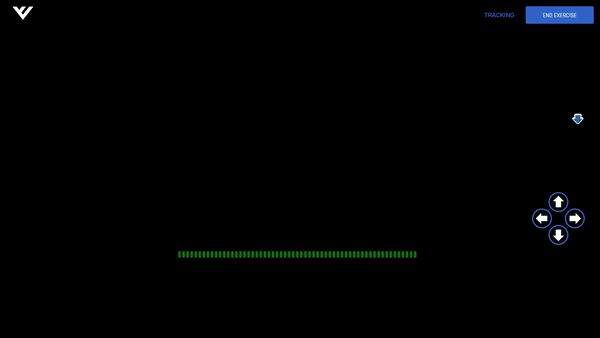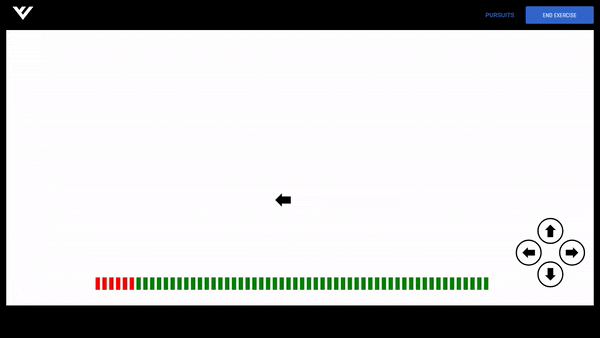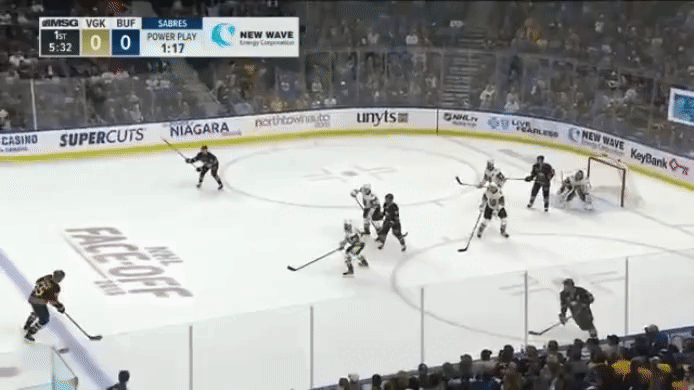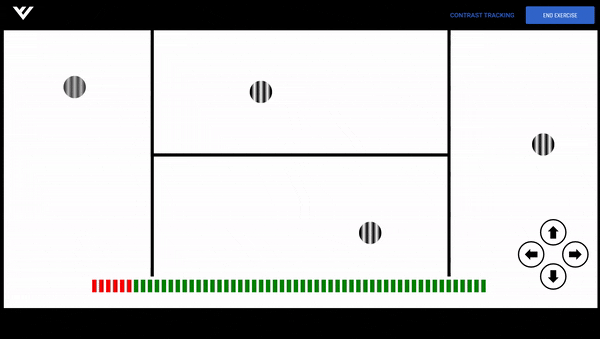There are many skills that make up the top hockey players, and with game speeds moving faster than ever before, goalies and skaters alike need to have exceptional processing speeds to track a quick-moving puck. Thus, it's no surprise that NHL players have significantly quicker tracking skills compared to AHL, CHL, NCAA and youth hockey players. At the NHL level, a slapshot can reach speeds over 100 MPH, meaning a goaltender only has milliseconds to track the puck and follow it as it approaches the net.
What many young skaters and goalies neglect in their training is the fact that over 80% of sensory information is visual, meaning nearly everything that happens on the ice starts with your eyes in order to tell your brain and body what to do. Here we focus on four trainable online exercises through our Edge Trainer to enhance your tracking skills on the ice:
Throughout a game, the puck gets quickly pinged across and around the ice, leaving players with just a split second to follow it as it moves. Saccadic tracking is one of the most foundational visual skills that allows your eyes to track an object as it jumps from point A to point B. Goalies need to rely on this skill tremendously to locate the puck through traffic or as it moves from the right to left side as an opposing player lines up a shot from close range or near the blue line. The Edge Trainer measures an athlete's reaction speed and accuracy levels when pressing the arrow key shown on the screen based on the visual output shown to the player. Throughout training, the arrow flashes at different speeds, typically ranging from 0.10s to 0.90s, which is optimal for the speed at which players have to react on the ice.

A highly underappreciated visual skill, (smooth) Pursuit eye movements allow an athlete's eyes to continuously follow a moving object. Tracking your opponent on defense and following the puck as it wraps around behind the net are two common examples of utilizing smooth pursuit eye movements. Pursuits compliment saccadic tracking and play a critical role in how an athlete sees the ice and tracks the puck or players. Athletes can adjust the speed at which the arrow moves along the screen, as well as the size of the arrow to increase the difficulty. Warming up both of these foundational tracking skills using Vizual Edge's "Game Day" and "Open Gym" modes, can help fire up an athlete's eyes to enhance their tracking ability right from the drop of the puck.

As the most important important visual skill for goalies, and one of the more important ones for skaters, Convergence relates to a player's ability to focus on an object as it approaches them. Goalies rely on their Convergence ability throughout the course of a game and helps them track the puck in the final 10-15 feet as it approaches the net. NHL goaltenders have an strong ability to converge, and elite goaltenders like Vasilevskiy, Shesterkin and Andersen and all possess superior Convergence. Many promising young goaltenders like Swayman, Oettinger, Hart, Husso and Spencer Knight recognize the importance of Convergence as it pertains to focusing on a shot, and choose to train with Vizual Edge. For everyone else on the ice, Convergence helps the ability to track and receive a pass, connect on a one-timer and find the puck in a scrum. If you've struggled to keep your eye on the puck or an opponent, it may be due to your Convergence ability, which is another trainable skill on the Edge Trainer!

Jersey colors, fans, stadium lights and numerous other distractions can impact a player's ability to track the puck throughout a game. Contrast Sensitivity relates to an athlete's ability to distinguish subtle light-dark differences in objects. As the puck moves through traffic, often crowded with dark jerseys, your contrast ability helps locate the puck by judging the slight difference in color. Combine this skill with multi-object tracking exercises offered in the Edge Trainer and you have a complete exercise to practice tracking more than one object and work on your contrast sensitivity. Vizual Edge trains both saccades and pursuits in the "Contrast Tracking" exercise, available in your customized "My Plan" and "Open Gym" mode. This exercise forces the athlete to track and identify the circle with a different contrast level and press the arrow key corresponding to that circle's quadrant. During a 2v1 rush, the defenseman often has to keep their eye on both the puck and the onrushing forwards in order to make a play and prevent a goal.

At the end of the day, vision alone isn't going to make elite hockey players, but it is something that can drastically help tracking for both goalies and skaters. The Vizual Edge online training program focuses on the most important visual and cognitive exercises needed to be an elite athlete. Everything is done on your own iPad or computer and just takes 15 minutes to do. New users can save 20% on training by heading to vizualedge.com. Winning is in sight!